A look at the options.
Why Hook lift/DROPS
In the early eighties, the Army conducted a Battle Attrition Study and Review of Ammunition Rates and Scales for high-intensity combat operations. This was combined with projected usage of Bar mines, a move to self-propelled 155 mm systems, and longer lines of communication as a result of strategic plan changes.
The results were sobering, the existing ammunition stock and transport capacity would simply not be up to the job, a third of what was required in some areas.
It was recognised that 75% of all available lifts in BAOR would be required to keep up with the Royal Artillery alone. Although palletisation had made significant improvements in handling times, it was still not enough and an increase in vehicles and personnel was not considered likely, something else was needed.
We can safely say that the British Army pioneered hook lift systems in a military context, a real innovation that revolutionised logistics delivery speed. By applying commercially proven hook lift systems (Marel Corporation) with a robust multi-wheel drive truck and trailer, ammunition turnaround times were reduced by a factor of 6.
The Demountable Rack Offload and Pickup System (DROPS) was used mainly in the artillery ammunition supply chain but also used for other commodities and specialist roles (bridging equipment for example)
The Leyland Medium Mobility DROPS were introduced in 1990 using a chassis originally developed by Scammel (of Wheel Nuts fame!). By the time the sales process had concluded, Leyland had been purchased by DAF. The vehicle called the Medium Mobility Load Carrier (MMLC) had an 8×6 drivetrain and a payload of 15 tonnes. An important part of the overall DROPS system is the DROPS trailer, which can carry the same payload as the towing vehicle.
There were two variants of the DROPS trailer, King and Queen, the former being made by King Trailers and the latter, by Reynolds Boughton. A 16-tonne low-mobility version was also introduced in small numbers.
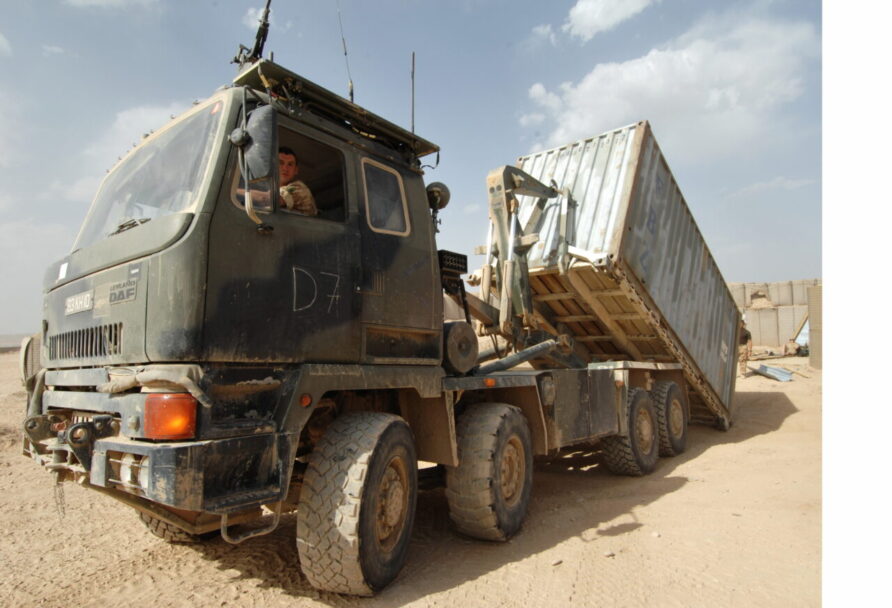
Four years after the Leyland DAF MMLC came into service, the Foden variant was introduced for £75m. This was obtained in much smaller numbers (400 rather than over 1,500) but was significantly more capable off-road and designated the Improved Medium Mobility Load Carrier (IMMLC). The payload was the same as the Leyland DAF vehicle.
The general approach was subsequently used for other cargo types; ISO containers, trailers, and smaller vehicles. As the vehicle fleet migrated to MAN SV’s, the hook lift equipment has evolved to make container handling more efficient, the latest being a £53 million contract to retrofit the existing Enhanced Pallet Loading System (EPLS) to 382 vehicles.
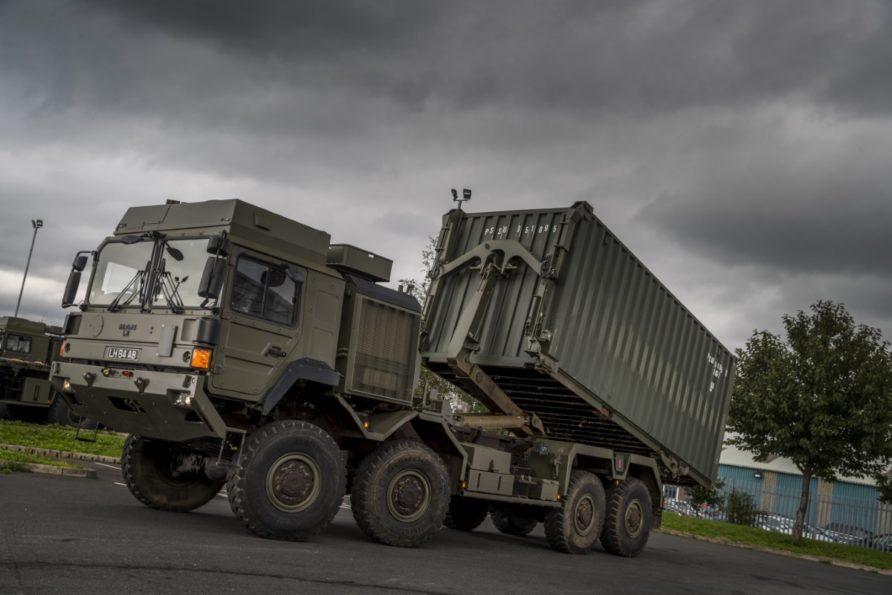
However, it is important to note what the R in DROPS is, rack, not ISO container.
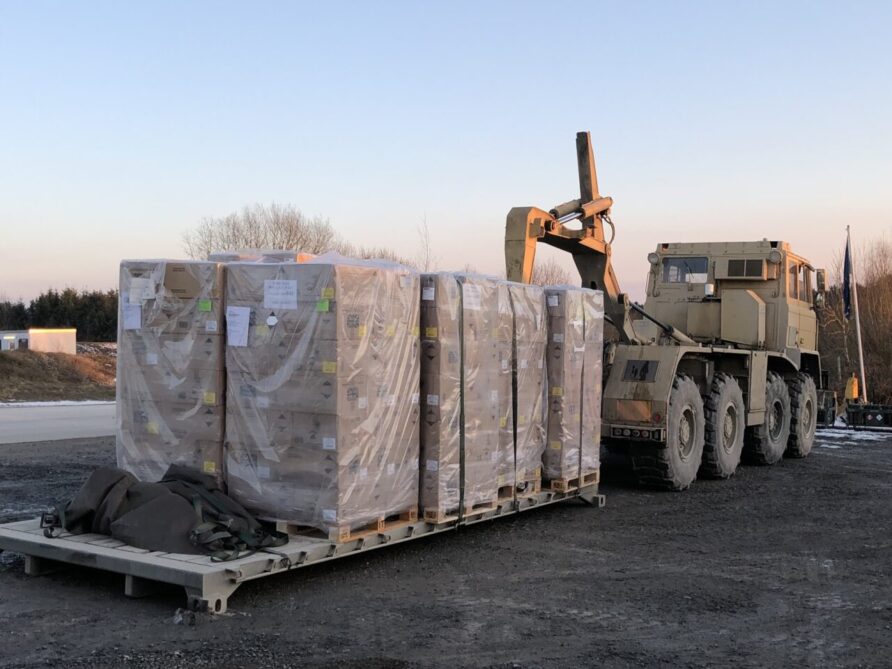
The reason DROPS were introduced was as a means of dropping off multiple pallets of ammunition secured to a single rack, i.e., the rack is just a very large pallet. Individual guns would not have any means to offload pallets from a conventional truck, so the pallets en-masse (on a rack) were dropped off at ground level where they could be unloaded manually.
The image below illustrates this…
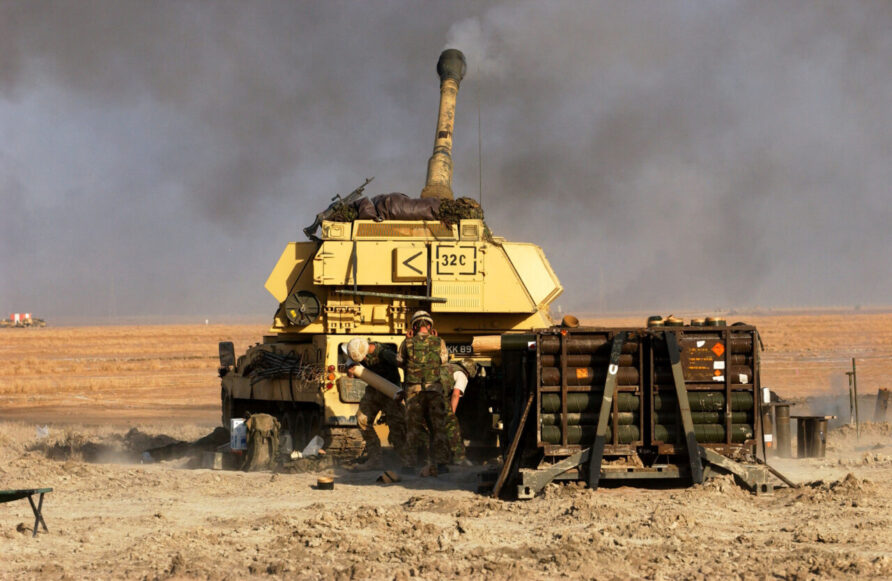
Speed (or cycle time) and the ability to offload at ground level without mechanical handling equipment was (and is) the point.
Before reading on, would you mind if I brought this to your attention?
Think Defence is a hobby, a serious hobby, but a hobby nonetheless.
I want to avoid charging for content, but hosting fees, software subscriptions and other services add up, so to help me keep the show on the road, I ask that you support the site in any way you can. It is hugely appreciated.
Advertising
You might see Google adverts depending on where you are on the site, please click one if it interests you. I know they can be annoying, but they are the one thing that returns the most.
Make a Donation
Donations can be made at a third-party site called Ko_fi.

Think Defence Merch
Everything from a Brimstone sticker to a Bailey Bridge duvet cover, pop over to the Think Defence Merchandise Store at Red Bubble.
Some might be marked as ‘mature content’ because it is a firearm!
Affiliate Links
Amazon and the occasional product link might appear in the content, you know the drill, I get a small cut if you go on to make a purchase
Pallet Handling
The step-down from the 20ft (ca. 6 m) rack or ISO container is the pallet, NATO, for the use of.
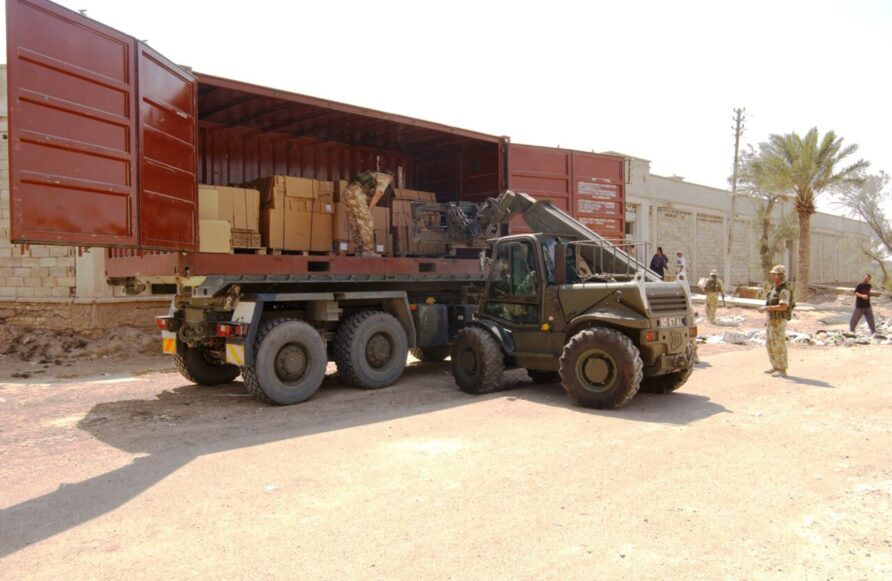
These are generally unloaded from vehicles or containers using forklift trucks or telehandlers (currently the JCB 524-50 and larger 541-70). The key factor with either a forklift or telehandlers is that they need to be present, with a qualified operator, fuel, support etc.
Apart from a few ‘tail’ lift and jib-equipped MAN SV’s, no solution exists for loading/unloading pallets from vehicles or helicopters without breaking them down into individual loads. Unpacking all those ammunition boxes one by one in the image above, or seeing below for an example.
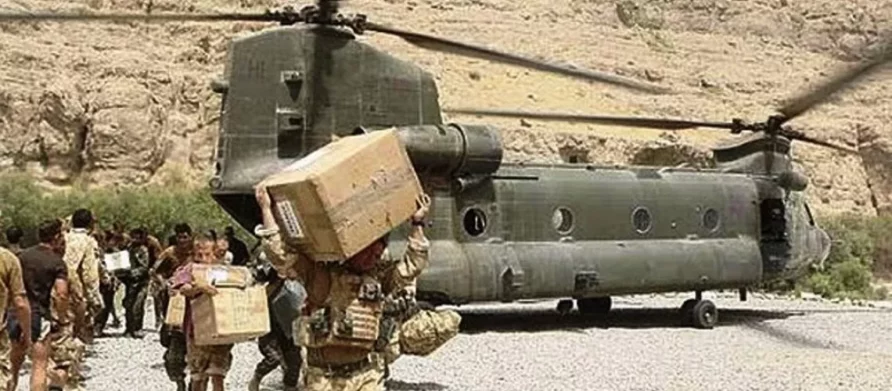
Is this a problem?
For individual pallets and loads, arguably not. There will, of course, be some circumstances where mechanical handling equipment is unavailable, or pallet loads cannot be broken down. A palletised fuel tank for a generator at a patrol base, perhaps, but we can reasonably argue that this would not warrant investment in new systems.
There might be a good argument for pallet trailers, but that will be the subject of another post.
Somewhere Between a Pallet and an ISO
Where I think there is a stronger argument for improvements is in the space between a 1m pallet and a 6m ISO container/rack. As we look at MRV-P and increasing requirements for distributed operations, there is a gulf between a pallet and an ISO. There is still a need for rapid handling without the encumbrance of having a separate forklift or telehandlers to worry about.
We could easily use the BICON, TRICON or QUADCON form factor as a template.

These are half, third, and quarter-size containers that can be handled with forklifts and clipped together, retaining the standard ISO container-type twist locks at their corners. There are many adaptations of these, from simple storage and transport spaces to fully integrated shelters and expandable units.
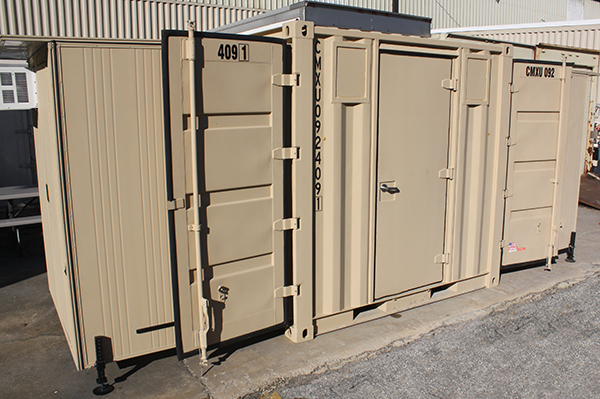
It is easy to find many examples of smaller container solutions, from ablutions to power generation, from expandable kitchens to medical stations, gyms, and water storage. All can be integrated and maintained off-site, and then rapidly loaded and deployed as required.
For smaller loads, the JMIC system allows stores to be loaded and quickly accessed

The Joint Modular Intermodal Platform (JMIP) is an intermodal platform (or rack) with integral locking fittings that allow JMIC to be secured without any form of strapping.
All these solutions have known and standardised footprints, the hard work of defining that has already been done.
Designs like the Dytecna Cube were also interesting, using the pallet footprint for a demountable electronics enclosure.
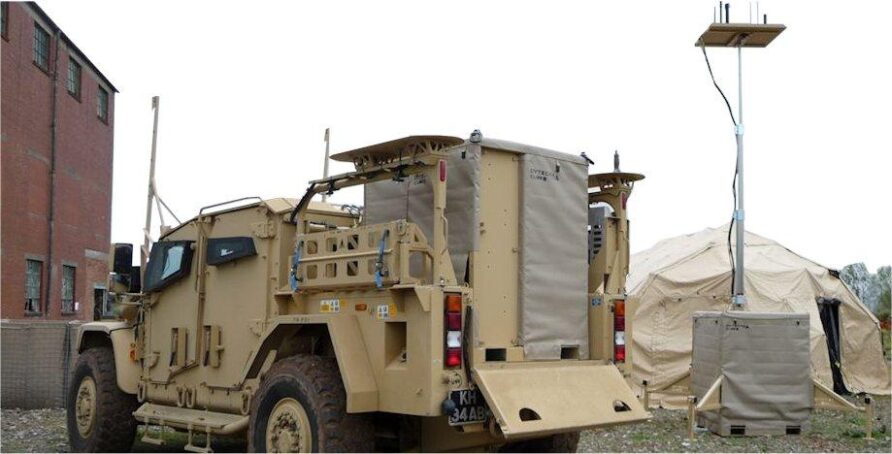
The problem remains, how to get them off or on the vehicle and onto the ground, quickly, without having to resort to forklifts, telehandlers or cranes?
The first option is to equip units with container jacks but for smaller loads.
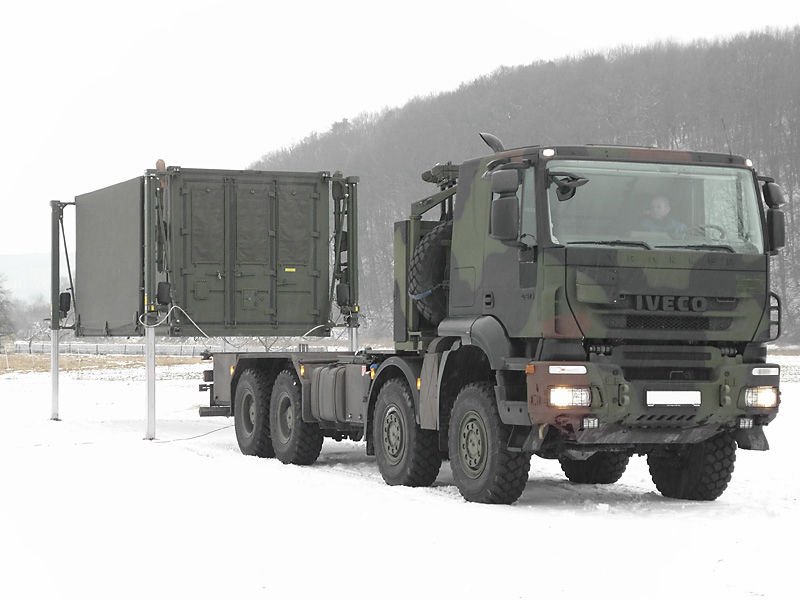
These are simple devices that attach to the sides of a container, manually jacked clear of the vehicle flatbed, and after the vehicle has driven away, lowered to the ground and demounted from the container. They are cheap, easy to use and basic, but not quick. They would also require some additional modifications for flat racks that might be used for pallets.
They are also available at a smaller scale, the Unitrac 72 shown below, for example

An alternative is the traditional hook lift, but at a smaller scale, plenty of manufacturers including Hiab, Palifinger and Stellar.
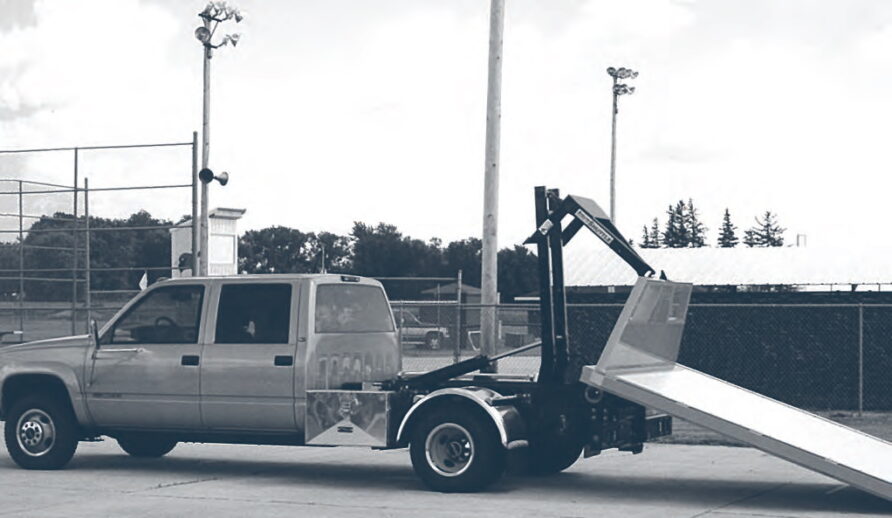
The now-defunct Ovik’s company looked at this a while ago with their Chameleon vehicle
These are also available on Oversnow vehicles
Equipping more vehicles with small hydraulic jib cranes would also allow single pallets to be moved on and off
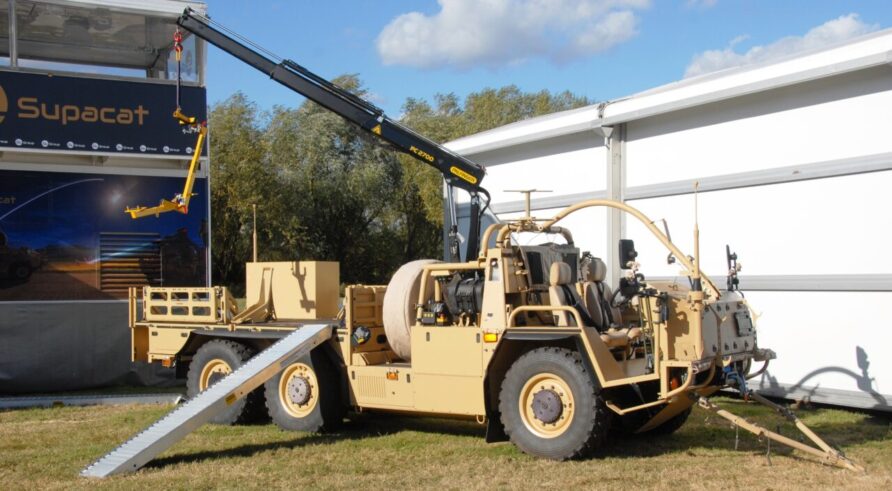
The last conventional option to look at is the skip loader, used by the KMW Mungo vehicle, for example, it is a militarised version of the Multicar M30 municipal maintenance vehicle. The skip loader design was chosen to reduce the height so it could fit inside their CH-53 helicopters.
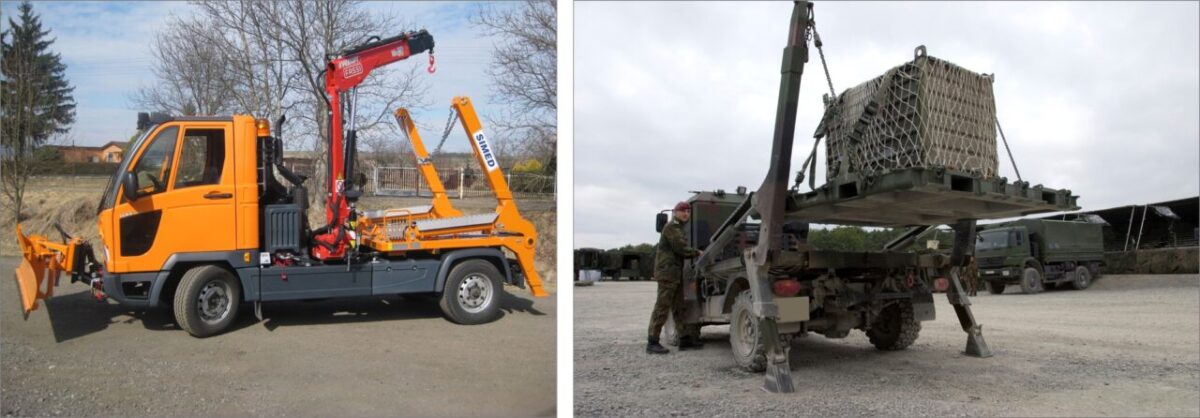
The MI-BOX is a variant of this, aimed at the house moving market, where keeping loads flat and easy to access are key factors.
A more unconventional approach is the U-Tail or Alfa Dropbox.
This uses a dedicated vehicle and demountable shelters that when offloaded, are at ground level. They are ideal for walk-in and walk-out shelters, small plant and other uses such as ablutions or medical spaces. I like this, although it would require an entirely new class of militarised vehicles, and thus less attractive.
Summary
There is a void between a pallet and a 20-foot ISO container or rack in the current logistics architecture.
We should investigate standardising on three building block architectures for all shelters and equipment;
- 1.2×1m NATO pallet
- Half-length ISO container/rack (BICON)
- 20ft (ca. 6 m) ISO container/rack
A half-length JMIP would allow 2×2×1 pallets or JMIC to be loaded, moved and unloaded as one. The 2x2x1 assembly would also fit on a single 463L air transport pallet for ease of movement through the supply chain. The larger variant of whatever comes out of the MRV-P programme should also be able to accommodate a half-length container or rack, with the smaller variant able to carry a single NATO pallet.
For the emerging class of UGV, we also need to think about deployment and recovery options. If those UGVs can be designed to fit inside either 20ft (ca. 6 m) ISO, 10ft (ca. 3 m) ISO or 1.2mx1m NATO pallet, then the whole range of civilian handling equipment becomes available to exploit.
A hook lift does not add a great deal of weight, but it does increase the height, raising the centre of gravity, so alternatives might be useful to consider, but we should consider them nonetheless.
Of course, this is just theoretical musing, and there are plenty of other things to spend time and money on.
Read more (affiliate link)

Discover more from Think Defence
Subscribe to get the latest posts sent to your email.


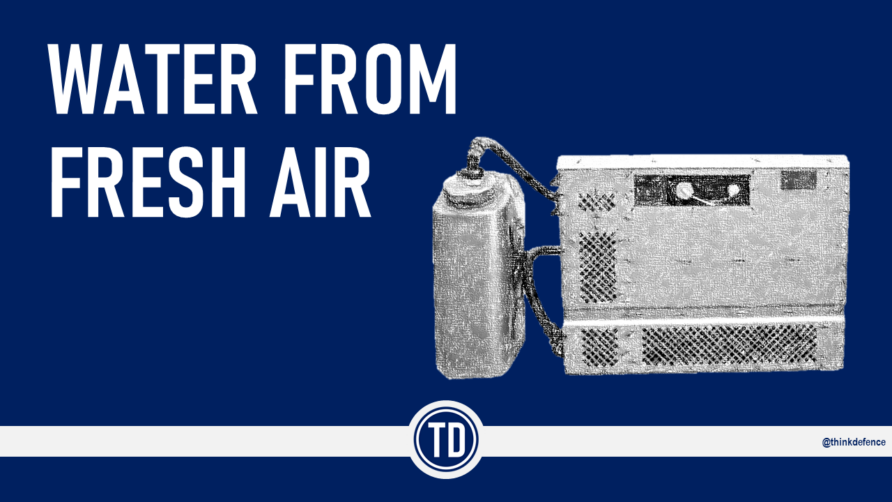
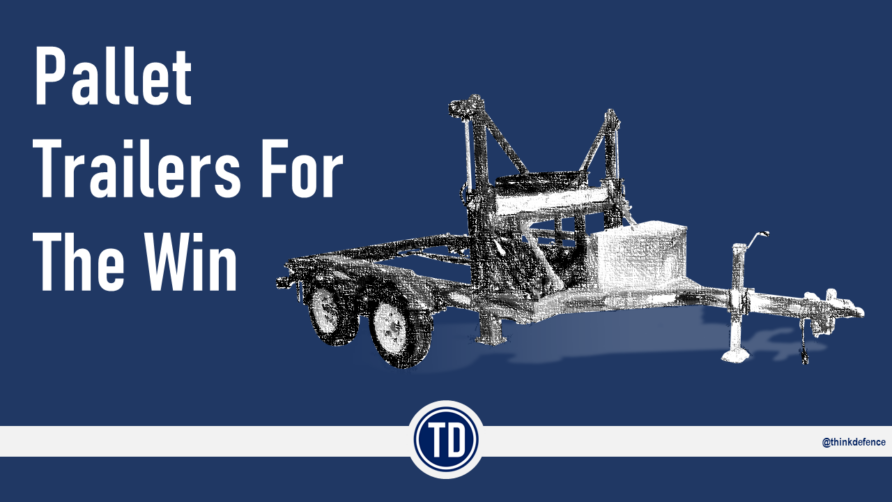
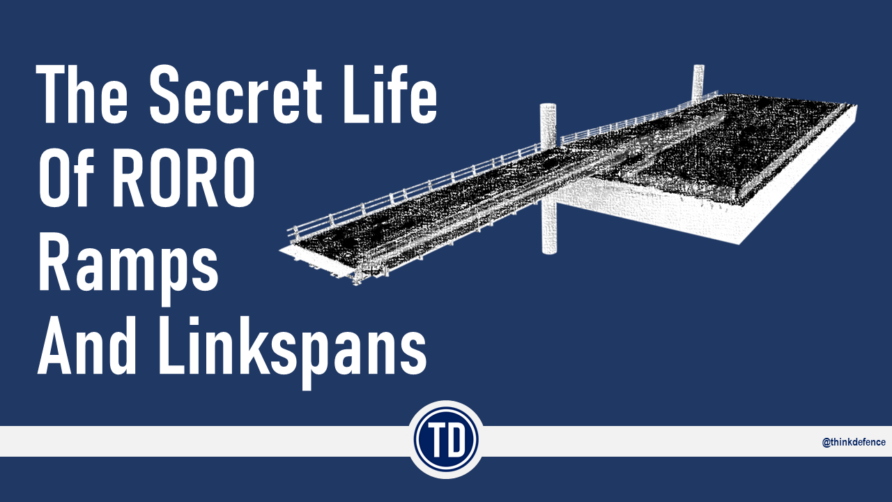
I have a Toyota Hilux pickup which came fitted with a purpose built tail lift. It is very compact and will lift 500kg from ground level. Its powered by the vehicle battery. I can send photos if interested.
Interesting that you include skip loaders. At the beginning of the 1980s I suggested a skip loader version of the Bedford 8 tonne for loading and unloading A vehicle power packs being ferried between REME forward and main repair groups – for which 8 tonnes were already scaled. A manufacturer confirmed that, with dog-leg arms to clear the radiators, a skip loader could handle the 6.5 tonne Challenger power pack, obviating the need to have a crane or RV immediately on hand and reducing turnround times. (Clearly the vehicle-mounted crane option couldn’t handle this.)
However, the ‘trucky’ MoD OR branch wouldn’t support it on the grounds that it would create a small fleet of specialist vehicles. (So what? Not Invented Here??)